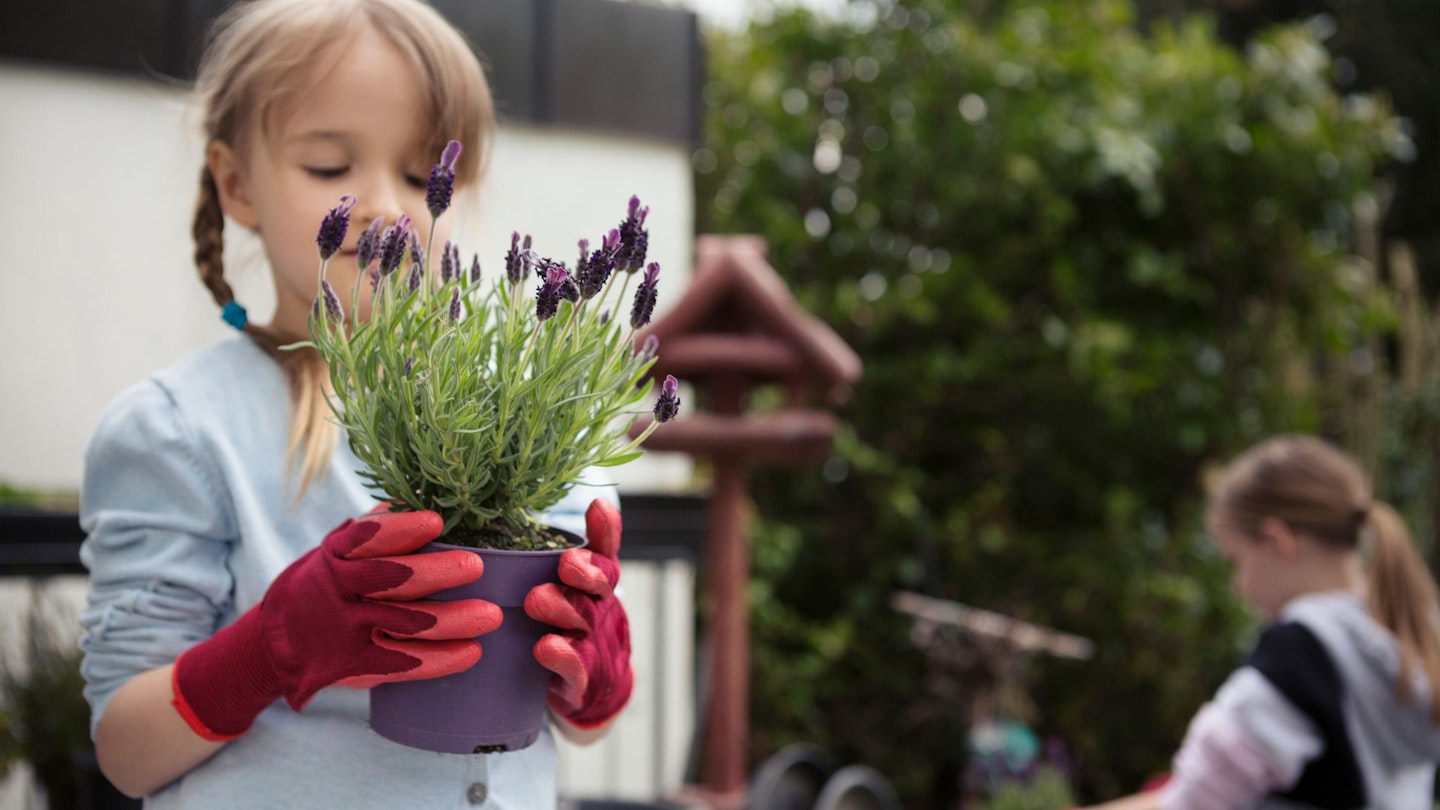The best drought tolerant plants are outdoor plants that withstand heat and don't need a lot of water. As we adapt to the hottest summer temperatures since records began, we need to consider our planting to ensure our gardens thrive despite water restrictions. As the next hose pipe ban is only a Met Office weather warning away, it's good to know there are ways we can be more self-sufficient and avoid the over-use of sprinklers and the garden hose.
The even better news is we're not just limited to ornamental grasses in this new normal. There are a variety of colourful, scented and interesting plants that can withstand periods of intense heat and limited rainfall. Cast your frame of reference to your holidays abroad and think of Lavender in Provence and Mediterranean planting. Passion Flowers, Pelargoniums and Verbena will give you a vibrant display of blooms and colour throughout the hottest of summers.
Best drought tolerant plants at a glance:
• Best hardy pollinator: Lavender – Lavandula ‘Hidcote’ – View on Crocus
• Best hardy exotic: Passion Flower – Passiflora 'Caerulea' – View on Amazon
• Best for a long flowering season: Pelargonium 'Pink Capricorn' – View on Crocus
Expert gardener Sarah Raven is all for planting more resilient plants so we don't overconsume water during extended periods of drought. Sarah says: "Acting thoughtfully, adopting sustainable methodology, and preserving our wonderful natural resources can be a truly rewarding experience and absolutely doesn’t require enormous effort. One of the simplest things you can do is to introduce drought tolerant plants to keep your garden looking lively and vibrant without the need for excessive watering.”
In addition, Chris Bonnett from Gardening Express says that as well as adapting our planting there are other things that gardeners can do, "like installing water butts to collect rainwater to water their garden.” Collecting rainwater in barrels, water butts or water tanks is an all-natural way of off-setting the water restrictions, such as hose pipe bans. However, be aware of the risk of Legionnaires’ disease that is caused by a bacteria that thrives in water above 20°C. Scroll to the FAQs for more eco-friendly and sustainable tips to ensure your garden can take the heat.
Best drought tolerant plants
Best hardy pollinator
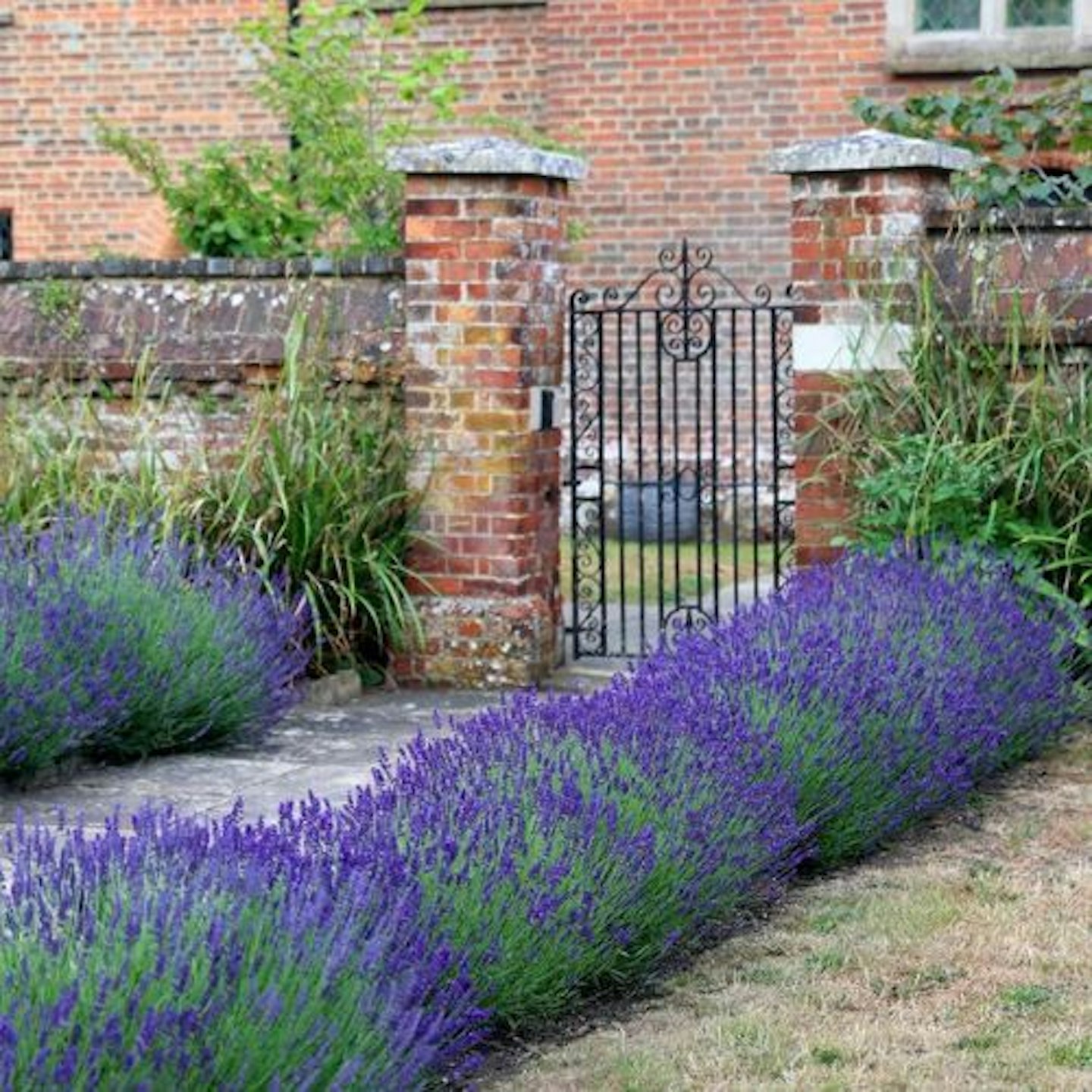
www.crocus.co.uk
Originally grown in the Mediterranean, Lavender – Lavandula ‘Hidcote’ is both heat and drought tolerant that's become a staple of the UK garden. Enjoy its wonderful scent by planting near a pathway. Additionally, Lavender is popular with pollinators, so expect lots of bees and butterflies to flock to its distinctive blue-lilac flowers. The flowers can be dried to create a wonderful potpourri. Or you can use the fresh flowers in cookery to make confectionary.
Customer review: "Use this to line our border around the patio. Hardy, keeps it shape well and always puts on a fabulous display with good scent. And the bees love it."
Pros
- Attracts bees and butterflies
- Scented
- Flowers have a variety of uses
- Hardy
Cons
- Generally great reviews, just one or two comments about sickly plants
Best hardy exotic
Passion Flower – Passiflora 'Caerulea' is an exotic climbing plant that thrives in the hot summer and can cope with a lack of rain. The spectacular white flowers, with rings of purple, blue and spiky filaments bloom from July to September. Autumn brings the gift of a small orange-yellow fruit. Because Passion Flower will grow anywhere, you can bring a touch of the tropical to your garden. It's a semi-evergreen plant that comes into its own during the summer. Just like the sun you can derive a sense of wellbeing from its beautiful flowers. There's something to be said for its holistic benefits as Passiflora is widely used in natural health remedies.
Customer review: "Yes, you get sent a tiny plant, but I've had my little Passiflora for just over four weeks and as you can see it's already tripled in size."
Pros
- Visually exotic and spectacular
- Low maintenance
- Adds interest to a wall
Cons
- Be aware that the plant will be small initially, so reviews comment about this
Best for a long flowering season

www.crocus.co.uk
With stunning pink flowers Pelargonium 'Pink Capricorn' is a treat for the senses in the summer. Deriving from the Geranium genus, Pelargoniums are just a little bit softer with sprays of small pink flowers. The three-lobed leaves have silky hairs and produce a rose and lemon scent when slightly bruised. This gorgeous Pink Capricorn is a must for a cottage garden and its hardiness will see it through the most extreme summer sun.
Customer review: "Fabulous candy floss pink looked marvellous in a pale blue pot. Lots of blooms and continued to flower in an open porch up until Christmas."
Pros
- Leaves emit a rose and lemon scent
- Long flowering season
- Very pretty
- Low maintenance
Cons
- Sensitive to frost
Best hardy wildflower
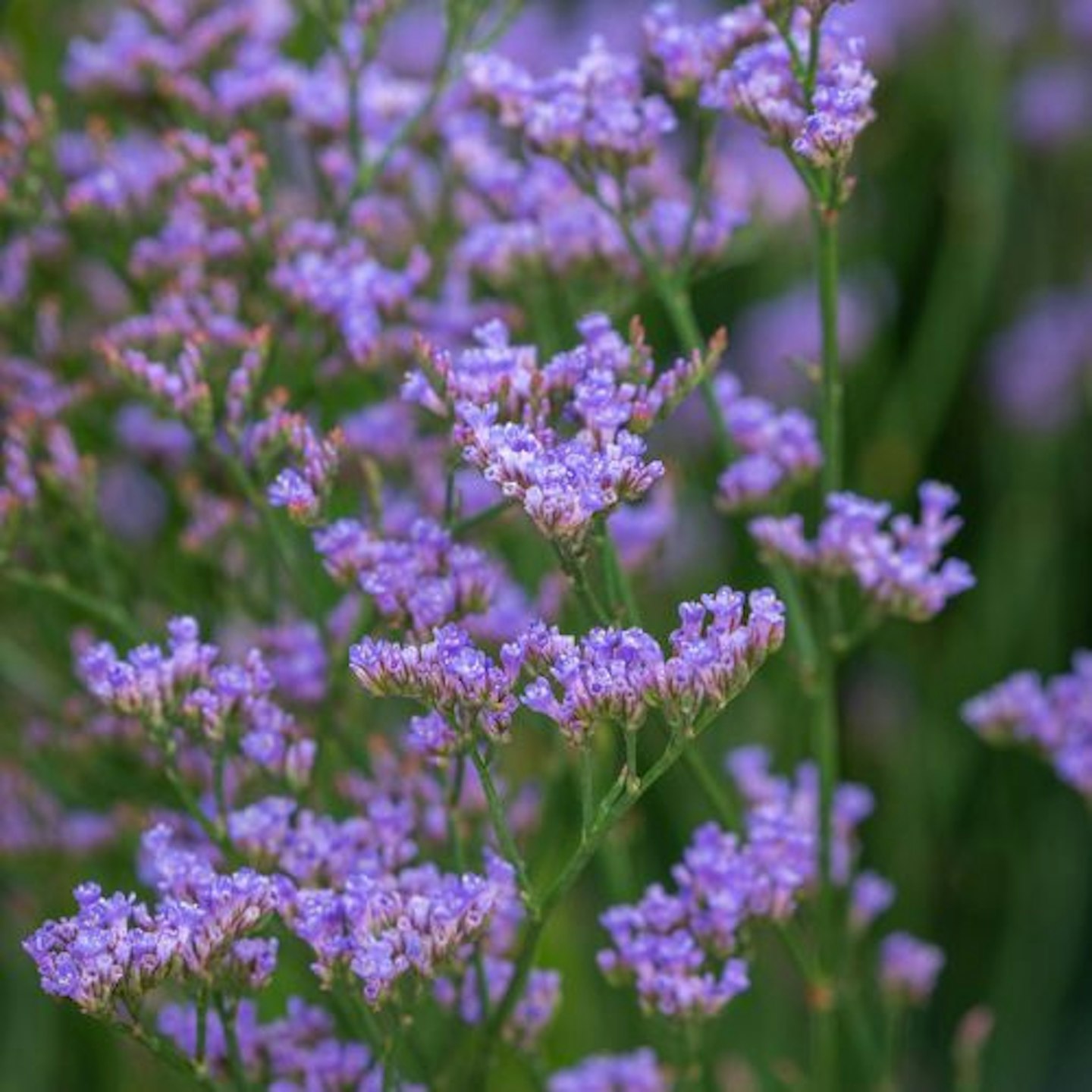
www.sarahraven.com
Commonly known as Sea Lavender, Limonium ‘Dazzle Rocks’ is a pollinator plant that attracts bees and butterflies throughout the summer. It's heat-resistant and drought tolerant. It can be seen all along the North Norfolk coast and cliff tops during the summer (take it from someone who knows!) and it's the most beautiful shade of mauve. As Sarah Raven writes, it naturally grows in thick swathes, but it can also be planted in pots to enjoy in your garden.
Pros
- Flowers can be dried
- Beautiful mauve colour
- Perfect for a coastal-themed garden
Cons
- No customer review
Best for urban planting

www.crocus.co.uk
You may have noticed this growing, because of the distinctive flower spikes, but not know its name. Hebe 'Champagne' is a foliage plant that's drought tolerant and because it's evergreen it provides year-round interest. It's a shrub that doesn't grow any larger than a metre in height and spread, so it's a great option for a small urban garden. In summer the flowers provide pollen for bees, whilst in winter the foliage deepens in colour to a purple hue which gives it year-round appeal.
Customer review: "A nice healthy plant growing well and flowering attractively."
Pros
- Pollution and salt air tolerant
- Spectacular flower spikes
- Pollinator
- Low maintenance
- Evergreen leaves
Cons
- Plant is widely out of stock online but you can register your email address to order when it's back in stock
Best for butterflies
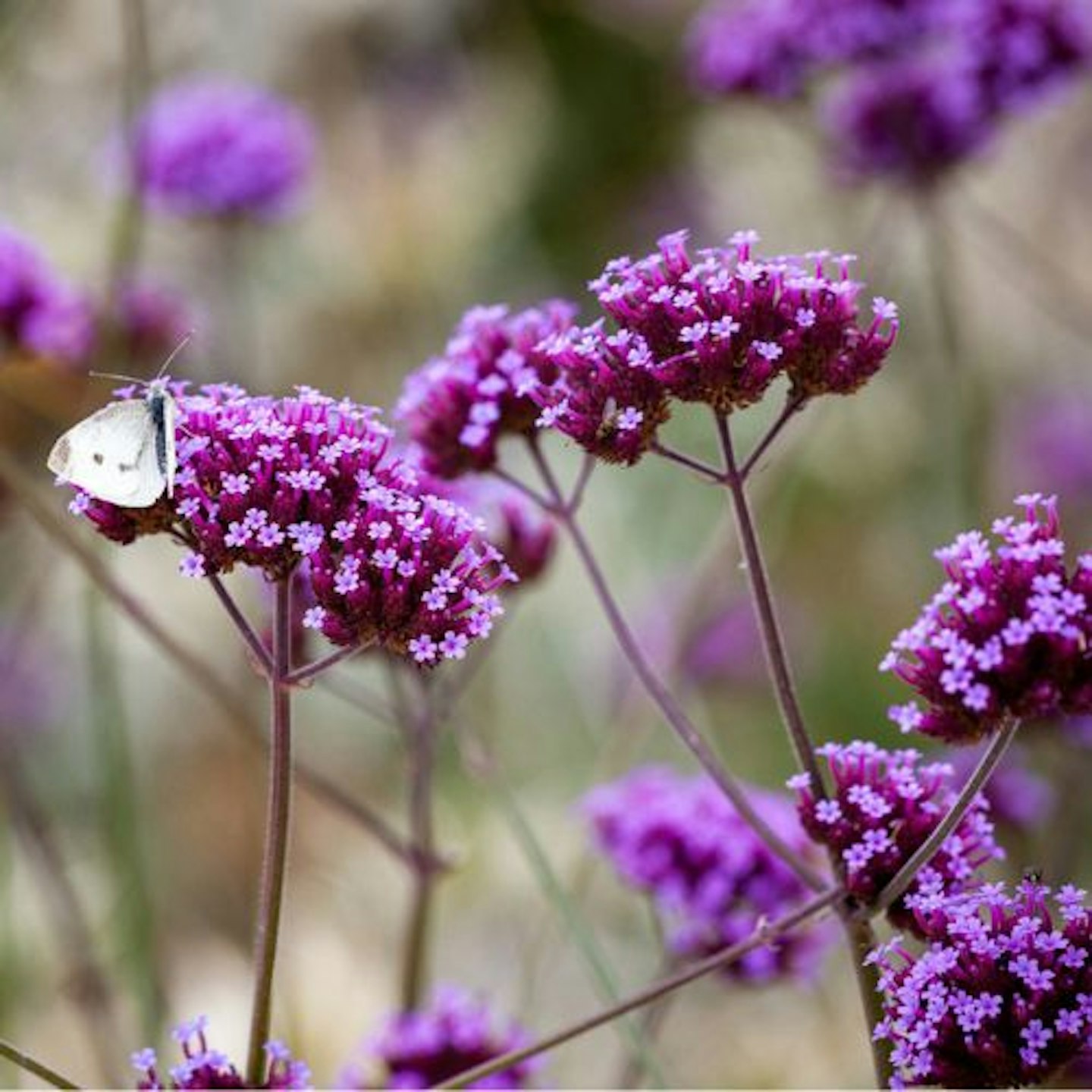
www.sarahraven.com
Verbena ‘Bonariensis’ produces a wonderful display of purple flowers from late summer into autumn. Verbena is a drought-tolerant perennial that's hardy and low maintenance. This Verbena grows tall, almost two metres, and gets covered in butterflies when the sun comes out. It's a hugely popular plant and a must as we move forward with more climate-conscious planting choices.
Customer review: "My Verbena Bonariensis arrived from Sarah Raven as strong, healthy, robust plugs and have been flowering from summer until the recent frosts in November. Very happy."
Pros
- Long flowering season
- Attracts butterflies
- Grows in most soil types
- Great value for money
Cons
- Needs a little bit of protection from cold weather in winter
Best for year-round interest
A mesmerising blue Sea Holly, this Eryngium ‘Picos Blue’ thrives in plenty of sunshine and free-draining soil. The plant has wiry stems and spiky blue-hued leaves with teasel-like blooms. This Amazon deal is amazing value: 150 seeds for less than £3. If you enjoy growing plants from scratch this Sea Holly will make a wonderful addition to your garden.
Customer review: "Very pleased with sea holly seeds which are growing well."
Pros
- Striking, sculptural leaves and flowers
- Wonderful blue hue
- Lovely addition to a coastal garden
Cons
- Be aware that these are seeds
Best hardy palm
A real statement plant, this upright palm has green sword-like leaves. It's a hardy plant that's drought tolerant and flourishes in full sun. Expect fragrant, white blooms from mature plants during the spring. Receive two Cordyline Australis for a great price from Amazon. Be aware that although this is one of the hardiest types of palm it may need a little protection from frost.
Customer review: "Delivered in a sturdy box, plants are exactly as per other reviewers' photographs, they are approximately 60cm tall and seem to be very healthy. They have been watered and potted on in a considerably larger container which will be their home until next spring when I intend to plant them in the garden."
Pros
- Grows in a range of soil types
- Likes full sun or partial shade
- Makes a wonderful centrepiece for a flower bed or border
Cons
- Needs protection from frost in winter
Best hardy foliage
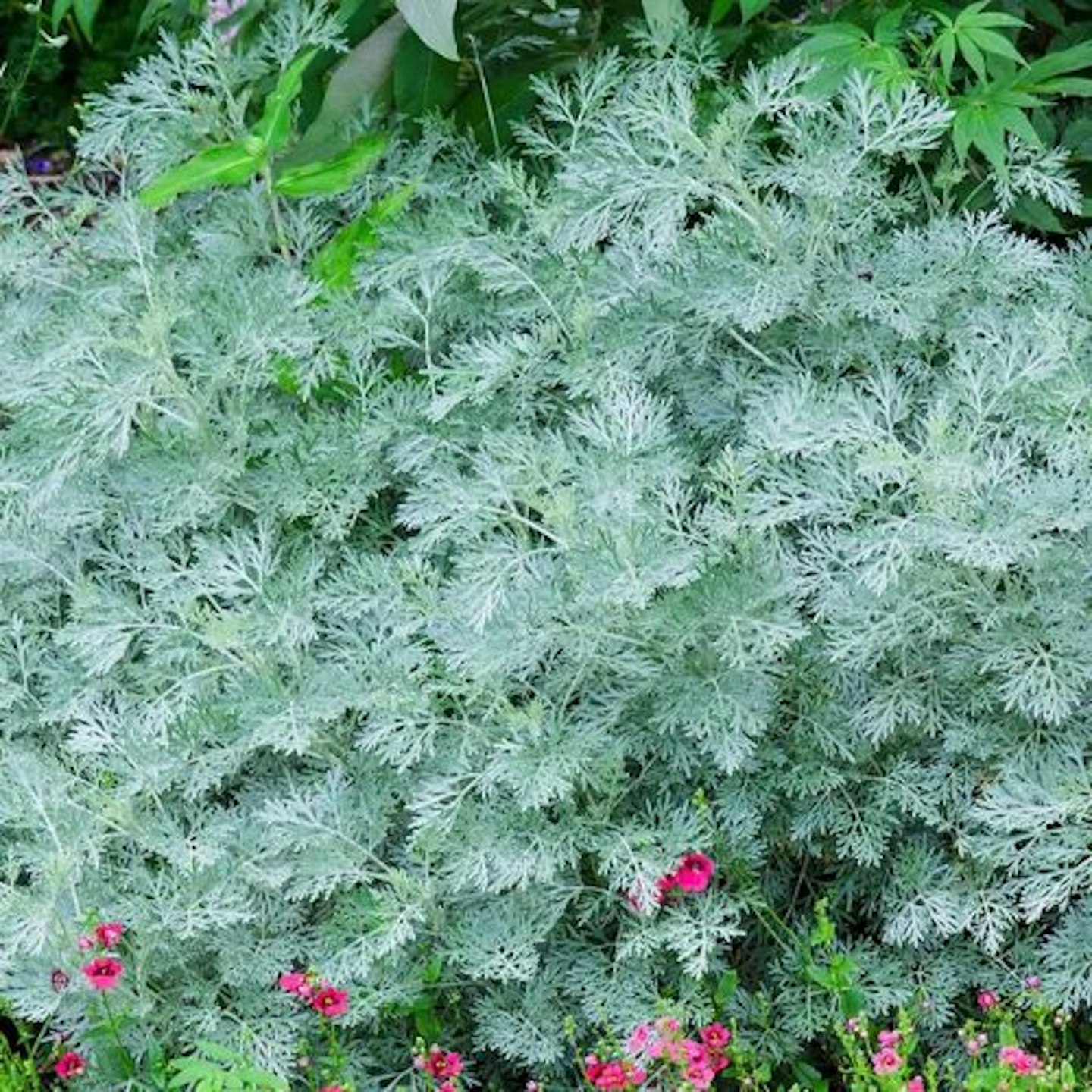
www.crocus.co.uk
This woody-stemmed perennial is a type of wormwood that has spreading fern-like silvery leaves. Artemisia 'Powis Castle' looks enchanting as part of a border, mixed with other textural foliage. It's one of the hardiest of the wormwood species and can withstand hot and dry temperatures. Whilst this isn't the wormwood Absinthe is made from, Artemisia 'Powis Castle' produces small yellow flowers in the summer and the foliage can be dried to make attractive flower arrangements.
Customer review: "Foliage is very fragrant when touched and beautiful silver colour. Will withstand drought and hot sun and still look good. If cut back quite hard in Autumn, will stay in shape and produce new foliage quite quickly for the next year. Indispensable in my chalk garden."
Pros
- Ideal for a rockery
- Aromatic foliage
- Stunning silvery colour and fern-like leaves
Cons
- Does not like poorly drained soil
Best for pretty flowers
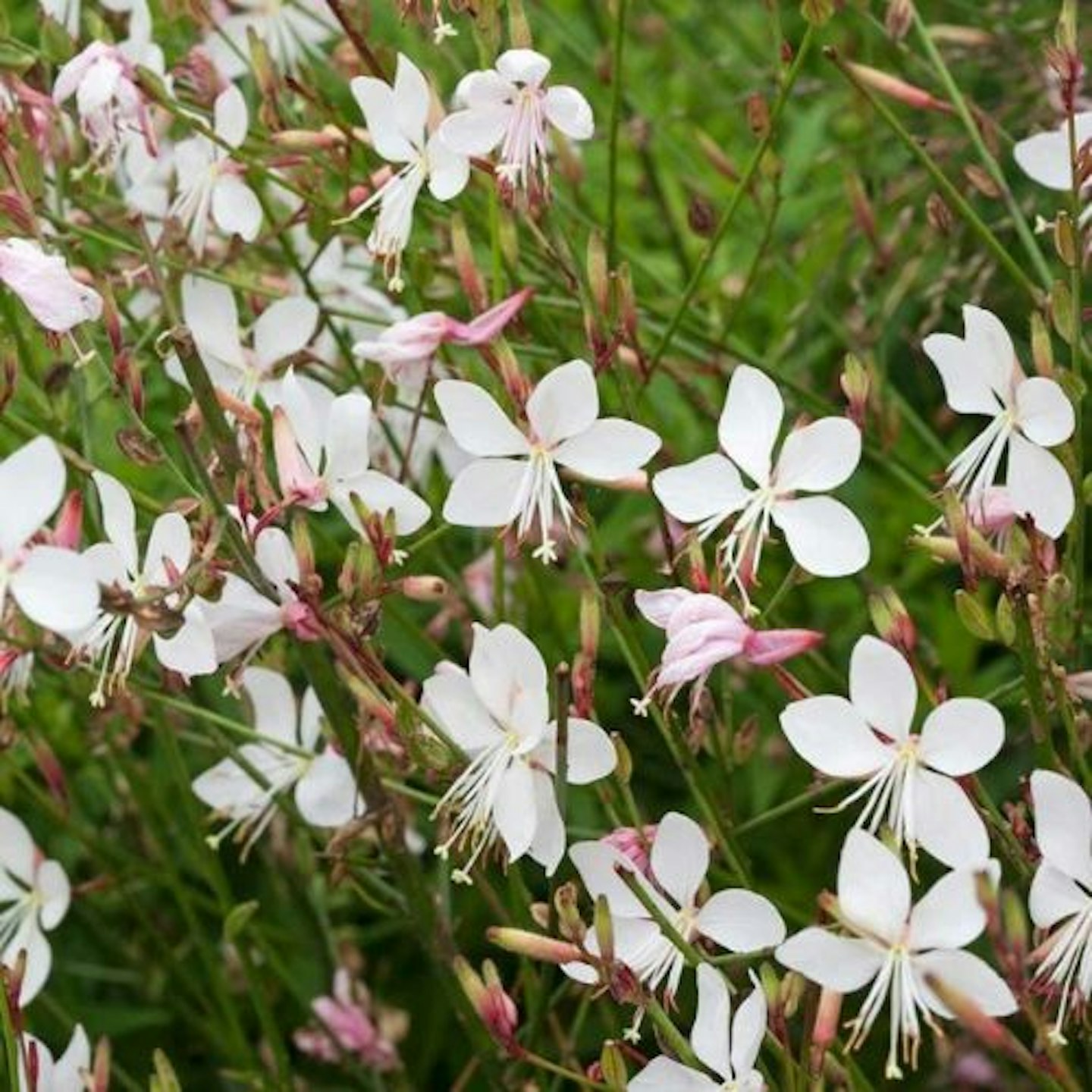
www.gardeningexpress.co.uk
Gaura ‘Lindheimeri’ or The Bride – 'Whirling Butterflies' produces masses of delicate white-tinged-pink flowers. It looks so ethereal it could belong in Middle Earth. It goes by many other names, including Beeblossom and White Gaura. Plant in a border for cascading masses of blooms from May to November. Alternatively, it can be planted in pots, which makes it a super choice for any size garden.
Customer review: "I recently bought seven Gaura plants of three types including The Bride. I was very pleasantly surprised at how large the plants were and how beautifully they were packed for safe transit. I soaked them overnight and they are now thriving since planted. I love these plants."
Pros
- Can be planted in borders or in pots
- Delicate 'butterfly' flowers
- Long flowering season
Cons
- None
Drought tolerant plant FAQs:
How can I collect rainwater in my garden?
Installing a water butt is a fantastic way to collect and save rainwater, which will keep plants watered during times of drought. Plus. it's an environmentally-friendly way to reduce water usage.
Rainfall in the UK is a bit of feast or famine, so take advantage of all those April showers and ensure you have several water butts, tanks or reservoirs filled up. Gutters on your house roof – and possibly on your shed or garage roof – collect rainwater that flows into a downpipe and to a drain.
To install a water butt you need to position it next to a downpipe. Mark the height of the water butt on the downpipe and measure 3cm below that mark. Using the second measurement cut through the downpipe with a hacksaw. Attach a rainwater diverter to the downpipe at the cut-off section.
On the water butt measure 8cm from the top and drill a hole. Install the connector from the diverter to the hole in the water butt.
Finally, do not worry about overflowing as any excess water will flow back into the downpipe and to the drain.
How do I prevent algae and bacteria growth in a water butt?
Give your water butt an annual clean, where you completely empty it and scrub the inside.
Make sure your water butt has a lid, this prevents rapid evaporation and also stops leaves and creepy-crawlies falling in and rotting. If your water butt does end up attracting flies or mosquitoes a great tip is to spray the surface of the water with a mixture of olive oil and water, as this will kill any larvae.
What other ways can I be more sustainable in my garden?
With the goal of self-sufficiency in mind, put goodness back into your garden in an eco-friendly way by making your own compost. Compost enriches the soil and retains moisture. Buy a compost bin, such as the Hozelock 2in1 Drum Composter, into which you put green waste such as vegetable peelings and grass clippings. Over time these rot to produce a liquid compost. All you need to do is tumble the rotting waste to aerate it, speeding up the decaying process. Smells are contained in the bin.
Also, if you're watering with a hose pipe, opt for a Multi Spray Gun nozzle. This has a soft-touch trigger so you can reduce the amount of water being sprayed. This spray gun attachment is inexpensive and can half your water usage when watering plants.
What to read next:
Discover everything you need to know to make your outside space look fantastic, quickly and easily, with hundreds of simple ideas, designer tricks, affordable products and expert advice with a Modern Gardens Membership. Find out more about the benefits of being a Member now.
Natalie Knowles is a Homes & Garden Product Writer for Modern Gardens, specialising in garden trends. When she's not flexing her mow-how, Natalie is a successful artist and illustrator.
